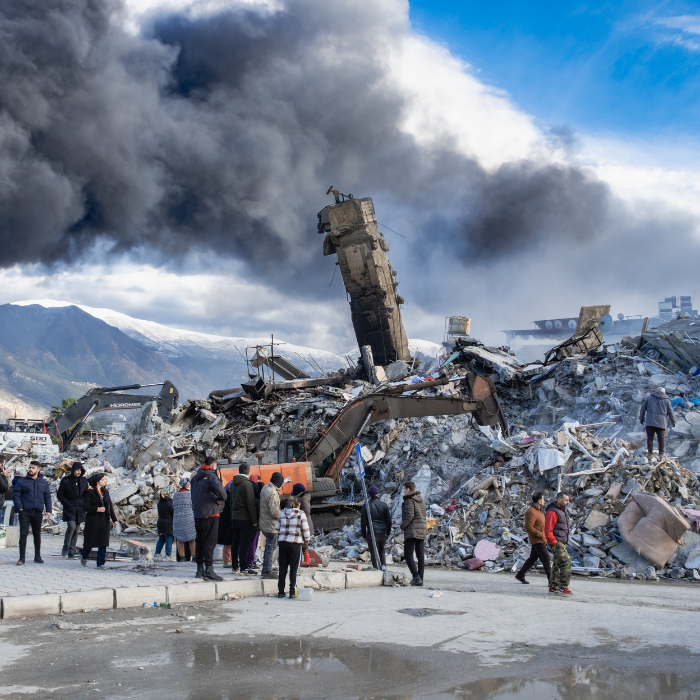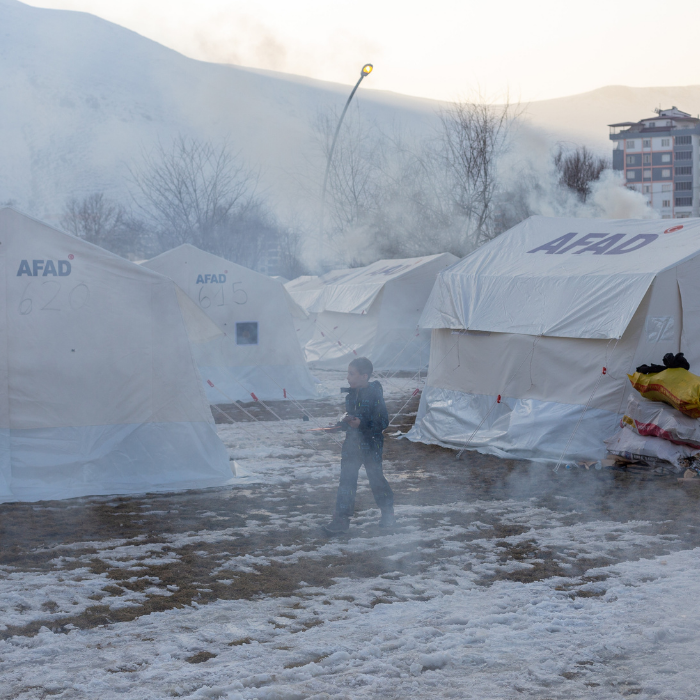2 months have passed since the earthquakes that occurred in Pazarcık district of Kahramanmaraş on February 6, causing damage in 11 provinces, tens of thousands of deaths and deeply affecting the whole Türkiye. TEMA Foundation, which has filed approximately 10 lawsuits so far regarding environmental plans covering the provinces in the earthquake region, once again reminded that scientific facts and planning principles should never be overlooked in order to prevent similar disasters.
Emphasising that one of the main reasons why the effects of the earthquake were so great was the opening of agricultural lands and areas unsuitable for construction to urban development, Ms. Deniz Ataç, Chairperson of the Board of Directors of TEMA Foundation, said, "The houses built on these soft ground lands against the best interest of public and urban planning principles have increased the magnitude of the disaster. Contractor's fault, engineering error, missing or bad material selection, for sure, played a role in are the painful consequences of earthquakes that turn into disasters by destroying buildings. In addition to all these effects, the collapse of urban development areas that do not comply with planning principles has revealed the relationship between faulty land use decisions and earthquakes more clearly than other reasons. This disaster in our country is closely related to the fact that land uses are not planned taking into account scientific criteria and in accordance with urban planning principles."
TEMA Foundation has filed approximately 10 lawsuits in the earthquake region
Reminding once again that TEMA Foundation works to ensure that all environmental plans are made in accordance with the public interest and urban planning principles, Ms. Deniz Ataç said, “In this context, all environmental plans and changes approved are followed, the necessary objections are made to the institutions, and lawsuits are filed against the violations. When we look at the spatial decisions developed through these plans in the earthquake region, it can be seen that, unfortunately, the decisions have become 'a tool of construction-oriented growth' instead of creating healthy living spaces."
Ms. Ataç underlined that the Foundation filed approximately 10 lawsuits against the environmental plans and changes made on them, which are located in the earthquake region and cover some provinces, and said, "One of the main issues objected in these cases is that stream beds, lands with high water levels and agricultural areas are opened to urban development by violating the most basic principles of planning. With the disaster we experienced in February, the relationship between the qualities of the soil in these areas not only with the agricultural sector but also with the earthquake has been revealed in a very painful way. Actually, previously we have underlined that they should not be opened for construction."
The airport project on Hatay Amik Lake became operational despite judicial decisions
Stating that one of the lawsuits filed by TEMA Foundation was about Hatay Airport, which was damaged after the earthquake, Ms. Ataç provided information about the lawsuit process and said, "A lawsuit was filed by TEMA Foundation in 2001 for the cancellation of the positive Environmental Impact Assessment (EIA) report regarding the airport project to be built on Amik Lake which was dried with the human factor. An expert report was prepared within the scope of the case in 2003. In the report, it was stated that the geological features were presented in the EIA report, but no seismic impact studies were carried out for the airport, which is in the 1st degree earthquake zone, and the measures to be adopted in this regard were not specified in the report. The case was concluded in favour of TEMA Foundation by the Adana Administrative Court, on the grounds that there were deficiencies in the EIA file, including the seismicity impact study, and the decision was approved and finalised by the Council of State. However, despite all the warnings, a new EIA process was initiated by the Ministry for the same project. An insufficient expert report was issued, and despite all the objections of the TEMA Foundation, the court ruled in line with this report, paving the way for the construction of the airport."
Natural events are transformed into disasters due to human errors
“As a matter of fact, natural events such as earthquakes and floods cannot be prevented. However, we should not forget that these natural events turn into disasters due to human errors. Therefore, the destructive effects of these events can be reduced or kept under control with decisions taken in the light of scientific data,” said Chairperson of the Board of Directors of TEMA Foundation, adding, “The latest disaster we experienced has once again painfully revealed that scientific facts and planning principles should never be ignored. As TEMA Foundation, we work sensitively to protect our fertile agricultural lands and to prevent development of areas that are not suitable for settlement, and we share our warnings with the public to prevent natural events from turning into disasters. We once again express our condolences to the relatives and our country for our citizens who lost their lives in the earthquake, and we express our best wishes for a speedy recovery to all the injured and everyone affected by the earthquake. We hope that this disaster, in which we lost tens of thousands of lives, will be the last one of its kind".
We are raising hope! TEMA Foundation
Note for editor: About expert reports prepared with respect to the lawsuits filed by the TEMA Foundation
According to the expert report prepared in the Environmental Plan case covering Adıyaman-Diyarbakır-Şanlıurfa provinces, such high-scale strategic plans should determine appropriate measures and policies to control the future growth of settlements located in regions with high agricultural and ecological potential. The plan in question has significant problems in terms of determining new urban development areas. While determining new development areas, no concern was taken about the development of the upper form (macroform) of the cities and the form they would take in the future, and the settlements were allowed to grow in almost every direction according to current trends and demands. It is included in the report that the extent to which the existing built-up areas of the settlements are structured and their potential for densification and transformation have not been investigated. It is envisaged that the settlements surrounded by fertile agricultural lands will reach approximately two/three times the size of the city's built area. According to the expert opinion, it is unclear on what these assumptions are based and as a result of which analysis and research these sizes were determined.
In the Malatya-Bingöl-Tunceli Environmental Plan case, the expert stated that the "geologically hazardous area" determination was not made. It is emphasised in the report that an environmental plan should compile information about the geological and geomorphological structure, and these areas should be shown in the plan, especially in order to take measures with the aim of mitigating disaster risks. Here too, urban development areas have been expanded uncontrollably towards 1st and 2nd class agricultural lands.
In the Adana-Mersin region, the expert committee warned the court about spatial decisions such as nuclear power plants and thermal power plants, which were taken without basing on seismicity and geological survey studies. It has been stated that proposing very dense construction on absolute agricultural areas is against the principles of urbanism.



